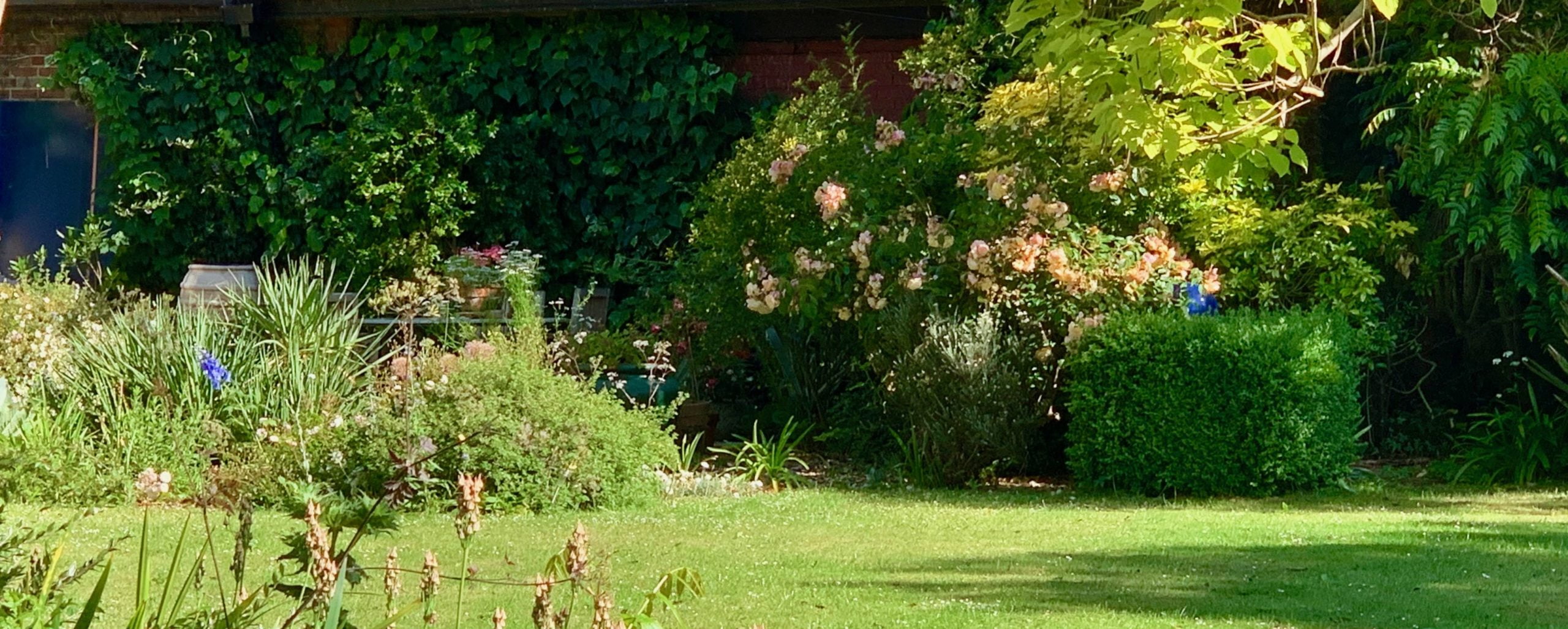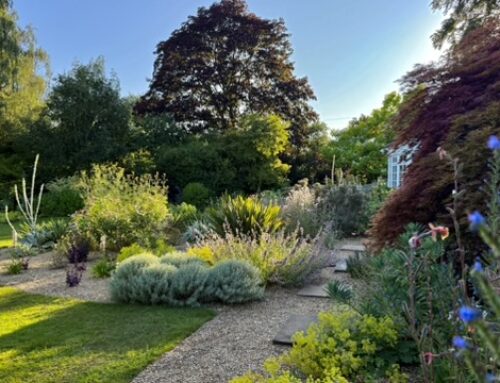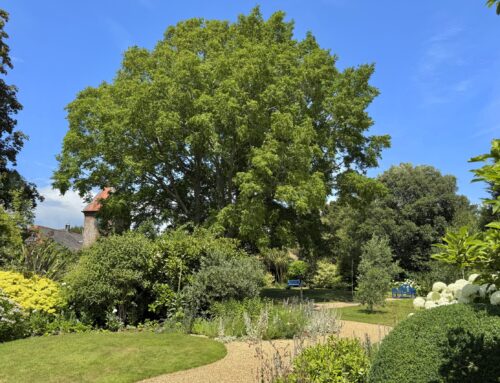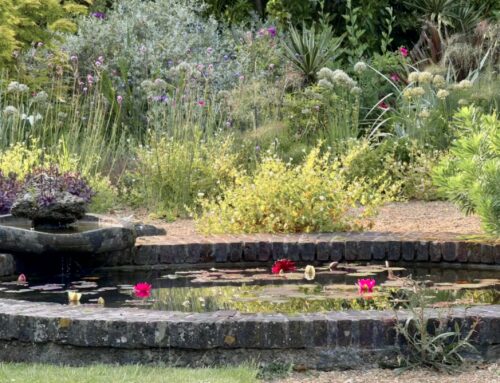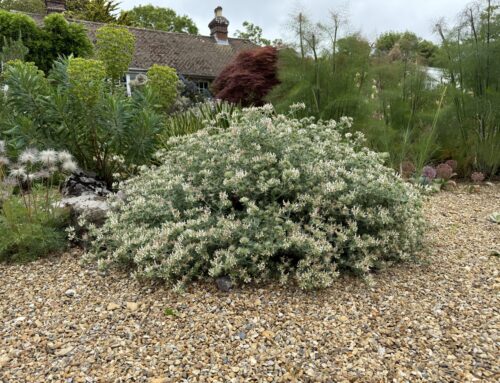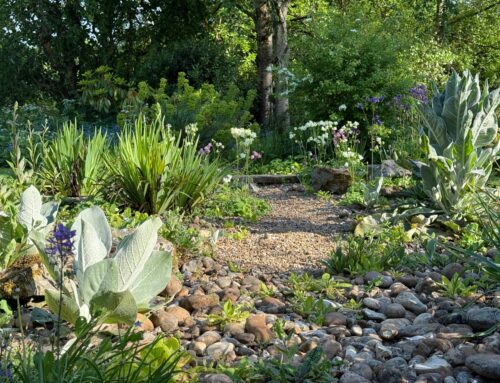Here at Denmans it is June and although the pandemic is still here, we have begun to see easing of restrictions from the government.
As a result as a garden we can now open along with the plant centre and gift shop to the public, whilst keeping to the government guidelines.
We are open on Thursdays, Fridays, Saturday and Sunday from 10am – 4pm, but you will have to make a reservation in advance. All of the information can be found HERE.
If you are able to visit this month, then you will be able to see the many roses that we have in bloom at the moment.
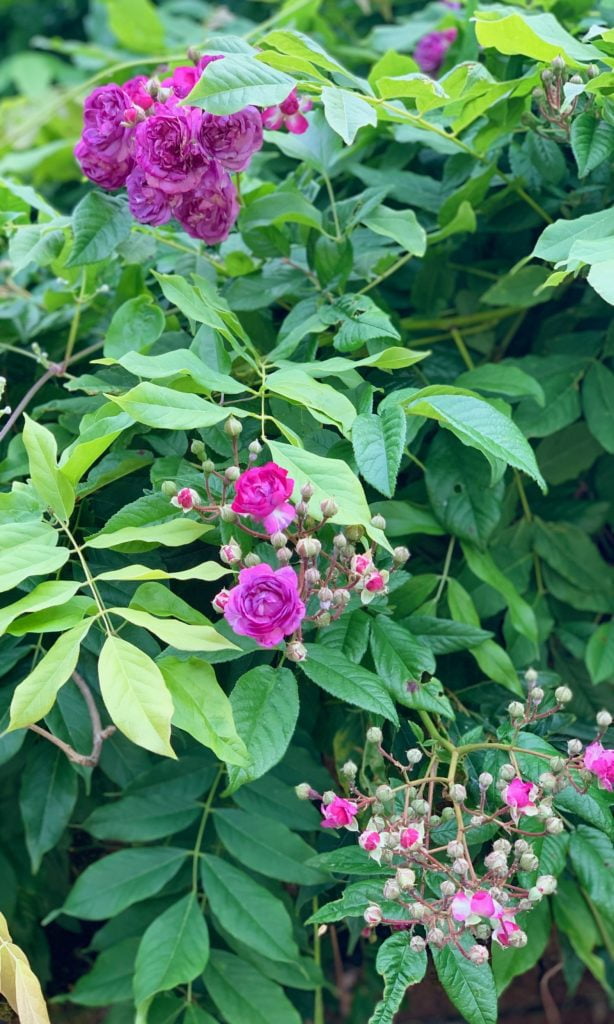
The rambler, Rosa Rose-Marie Viaud was introduced in 1924 and is one of the few roses we have that has no scent.
Over the past year we have been trying to identify all of those for which we have no records. We have also, through cutting back areas in the garden, “re-discovered “ roses that had been grown over and “lost”.
We now believe we have around 50 different roses in the garden, planted at various times from when Joyce Robinson started her garden up to the present day.
There are still some more to be identified and, no doubt to be discovered, and we are indebted to Elizabeth and Jonathon Sawaday of Apuldram Roses for their help and expertise.
I would like to share a few of those roses with you including some of my favourites.
Starting at the entrance to the Walled Garden, we have Rosa ‘Rose-Marie Viaud’, a very pretty rambler that has grown through wisteria and either side of the entrance. It has small semi-double blooms which open violet and fade to lilac and is very charming!
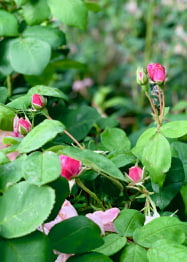
Pale pink Rosa Madame ‘Pierre Oger’ starts with dark pink buds and has the distinctive fragrance of all Bourbon roses.
Just over halfway down on the right-hand side, we have two roses that were obscured by a now-removed Pittosporum and an overgrown Senecio (now pruned). The one at the back of the bed is Rosa ‘Madame Pierre Oger’, a bourbon rose with a nice scent and cup-shaped flowers of a pale pink colour.
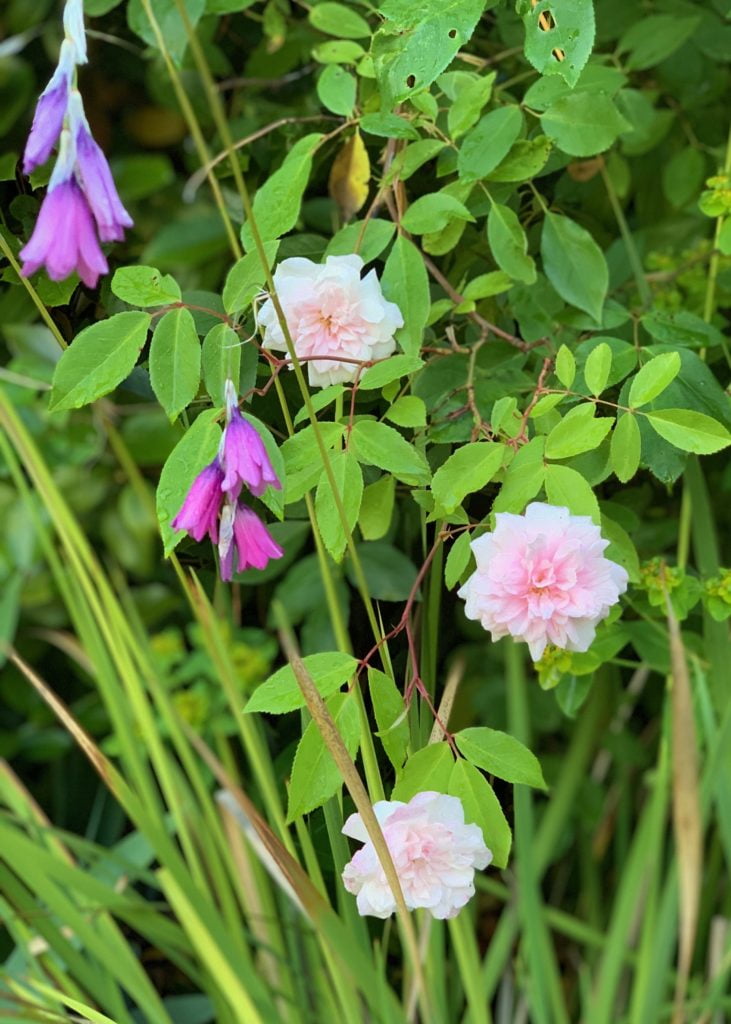
The lovely Rosa Cecille Brunner is a fragrant climber and is almost thorn-free.
In the far left-hand corner of the Walled Garden next to a large Itea illicifolia is a climbing rose called Rosa Cecile Brunner, it is a lovely rose and has dainty pointed buds opening to rose pink blooms in sprays.
We have it growing against a wall where it has reached the top and it has a lovely scent and is a repeat bloomer.
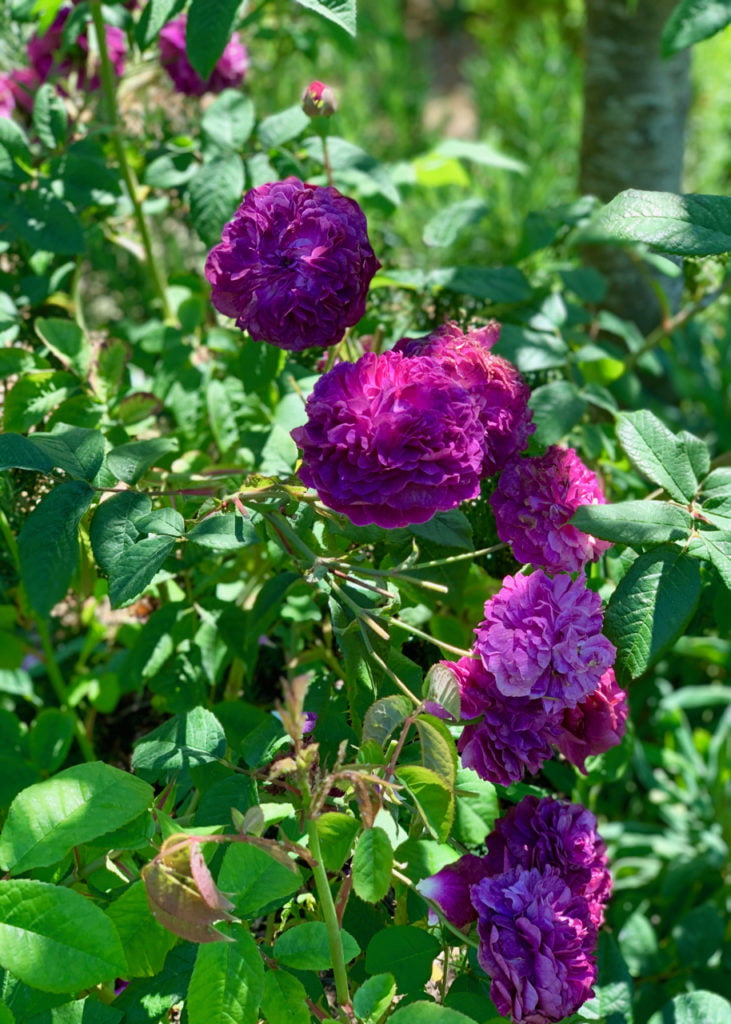
Rosa Cardinal Richelieu is one rose that can take some shade.
In the bed opposite, under the canopy of an olive is Rosa ‘Cardinal Richelieu’, a gallica rose of beauty with dark purple blooms that contrast nicely with the silver foliage of the olive and Phlomis italica nearby.
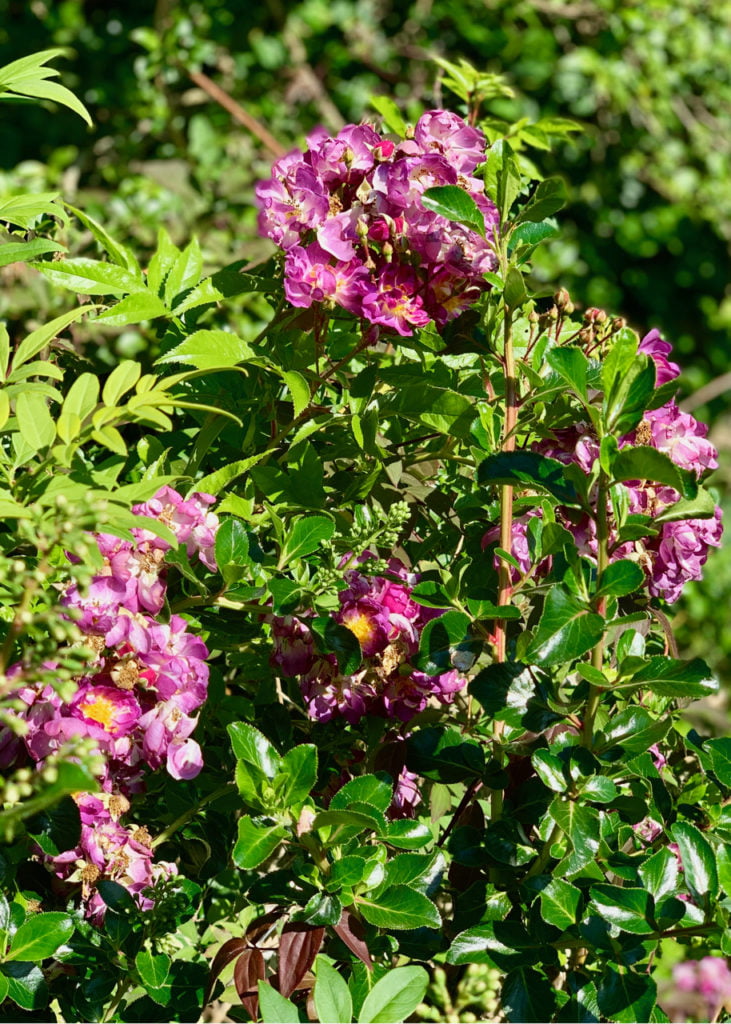
The popular rambler Rosa Veilchenblau develops small brown-red hips that persist through early winter.
As you exit the Walled Garden against the wall behind a Bupleurum fruiticosa we have a rambler called Rosa ‘Veilchenblau’ which has mauve petals with white streaks and centres that fade to lilac. Its small blooms in huge clusters put on a show and it’s one we will encourage to ramble further.
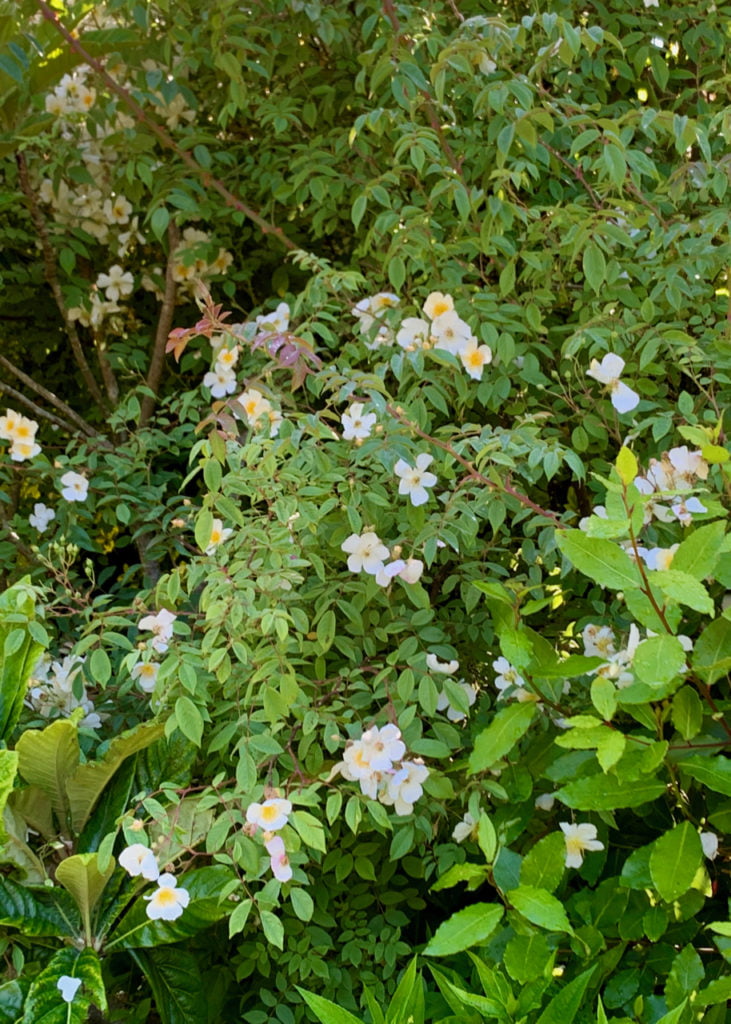
Introduced in 1907, Rosa Seagull is another old rambler. It can grow up to 6 meters so can be grown up a tree.
In the main garden, immediately upon exiting the Walled Garden, to the left behind the Oxford blue “John Brookes” bench is one of two Rosa ‘Seagull’ ramblers climbing through Euonymous japonicus against the wall. Large trusses of white blooms with golden stamens adorn this rose en masse and is a rose to admire from distance!
When we were fortunate enough to have Elizabeth and Jonathon visit from Apuldram roses, they were stopped in their tracks by a rugosa rose that is in one of the dry gravel stream beds.

Rosa ‘Grootendorst supreme’ is an unusual rugosa rose that is well established in our dry riverbed.
They left us vowing to find out what is is … and a week later were able to identify it as Rosa rugosa ‘Grootensdorst supreme’, a very unusual rose. It has numerous clusters of deep red one inch flowers and stands out superbly against the gravel at its feet.
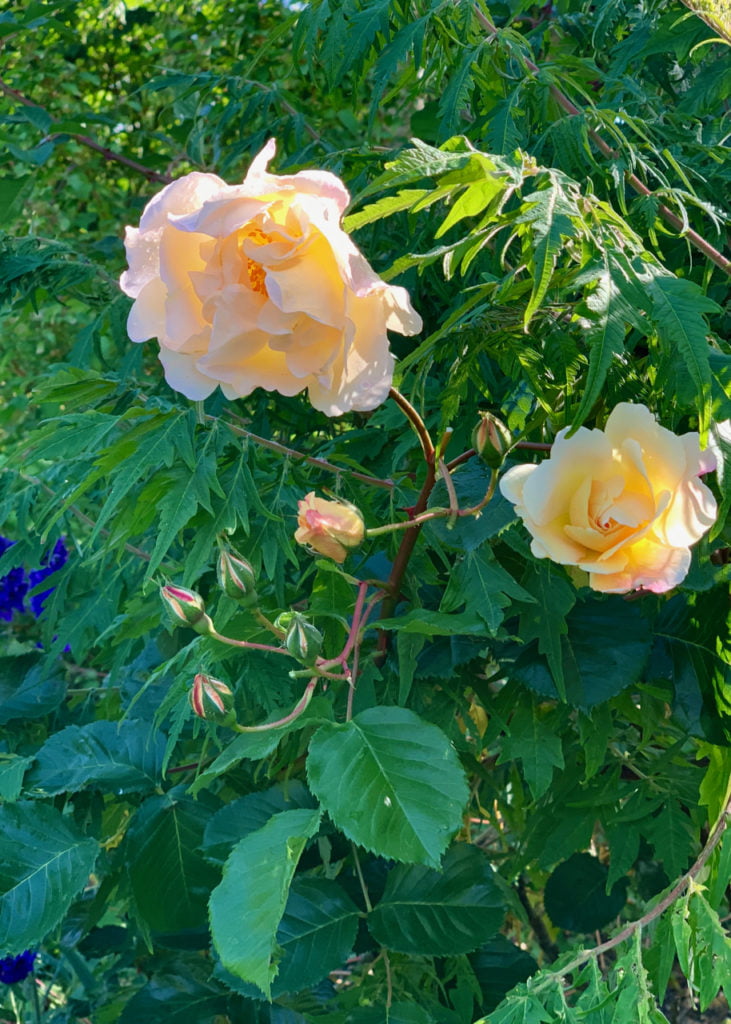
The deliciously fragrant Rosa ‘Lady Hillingdon’ perfumes the air by the pond.
Near the pond, across from Marian Smith’s statue of “The Dreamer” and behind the bench, we have Rosa ‘Lady Hillingdon’. This is a climbing tea rose that repeat flowers and has a lovely fragrance. We keep it short and admire its fragrance and yellow blooms opening from apricot buds.
If you read my blog from May, you will know that I’m partial to purple foliage plants in the garden and one rose ticks this box in the same vein.
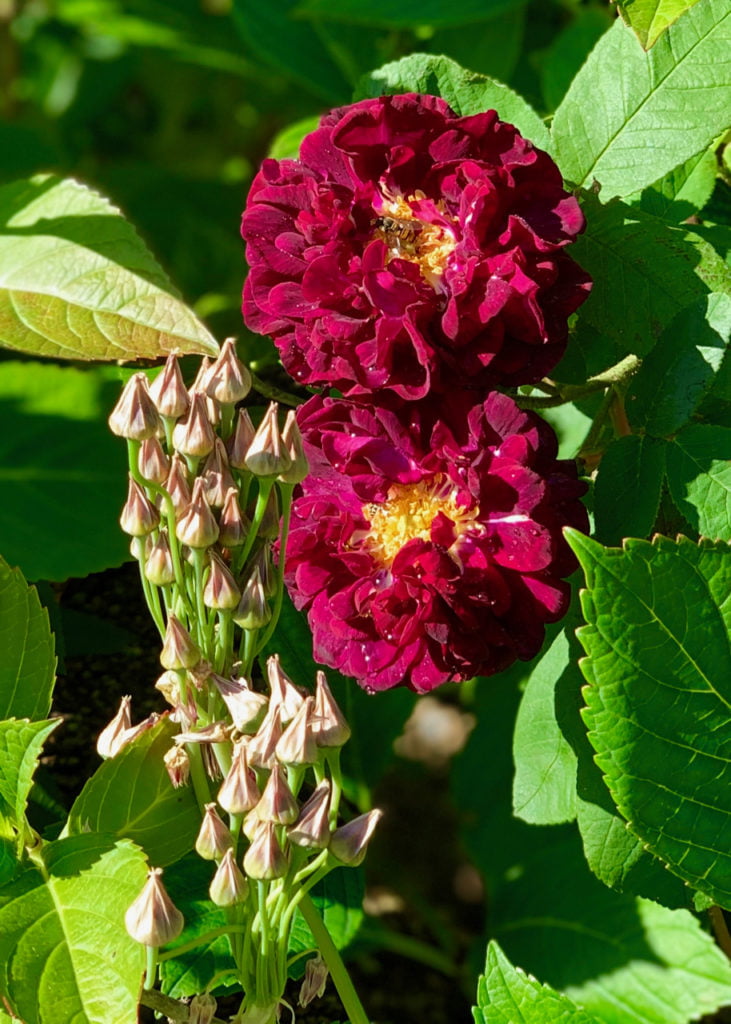
The gallica rose, Rosa Charles de Mills, was developed by an anonymous Dutch rose breeder before 1786,
The rose is Rosa ‘Charles de Mills’ and is a magenta purple coloured gallica rose with heavy fragrance. It is planted in a border behind a row of hydrangeas and was engulfed by rampant years-old gnarly stemmed mahonia growing out towards the light. We will have to assess the position of this and see if we can show it off at its best.
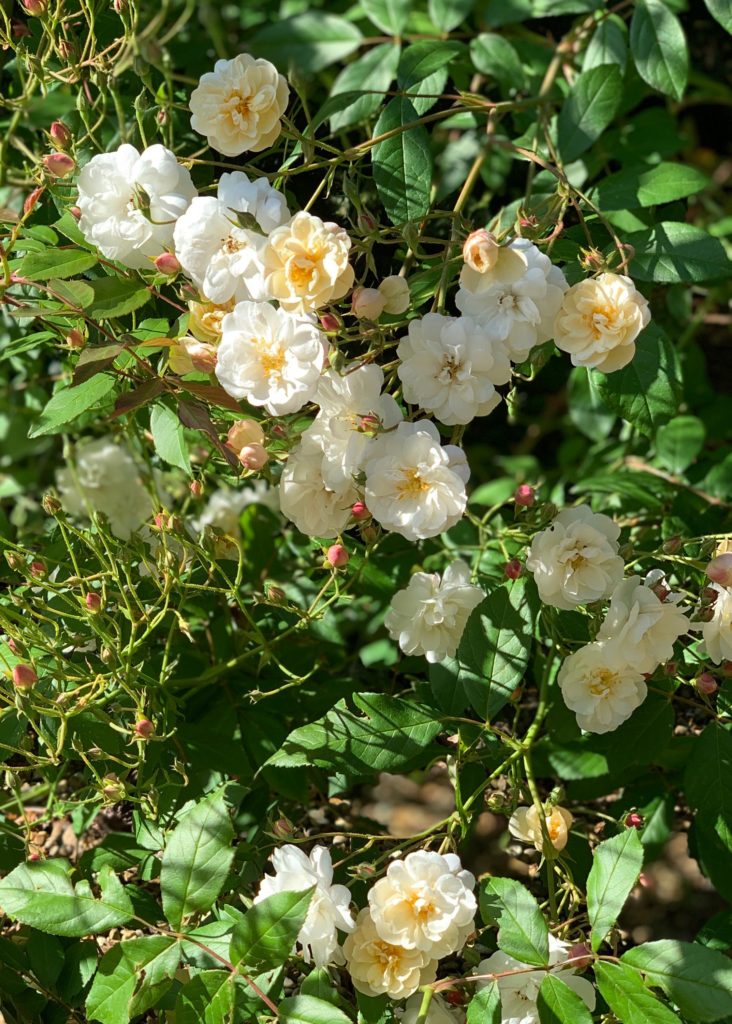
The rambler, Rosa ‘Felicity et Perpetue’, was developed in France in 1827 . We keep it clipped without support near the Cottage.
On the west wall we have a Cercis canadensis “Forest Pansy” tree and in front of this to the left is Rosa ‘Felicity et Perpetue’. It is a climber, but due to the position and an adjacent Acer we have kept it short and arching. It has creamy white pompom flowers tinged pink at first… very pretty!
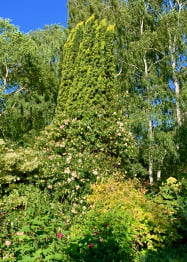
The rambler Rosa ‘Alberic Barbier grows beautifully up the fastigiate yew across from the Cottage.
Walking back across the lawn in front of the cottage we have a centre border with a fastigiate yew as it’s focal point. Growing up half itsheight is another unusual but special rose (Elizabeth enthused!) called Rosa ‘Alberic Barbier’, a rambler with creamy white double flowers opening from yellow buds. This rose is not in the same league for vigour as “Kiftsgate “ or “Wedding Day “ but is very cleverly used here to grow up but not dominate the yew.

The lovely yellow Rosa ‘Mermaid’ was one of John Brookes’ favourite roses.
One of John Brookes’ favourite roses was Rosa ‘Mermaid’, a climbing rose with a sweet fragrance and pale yellow single blooms with sulphur coloured stamens.
It is repeat flowering and we have planted a new one against the patio wall of the cottage, which he had requested.
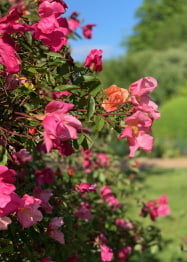
A China rose, Rosa x odorata ‘Mutabilis’ can bloom for as long as 6 months and began blooming at Denmans in April this year.
Walking past the conservatory and the cucumber house, to the left of the sculpture of the doves we have Rosa x odorata ‘Mutabilis’, an extraordinary tea rose that in bloom changes from yellow to pink-orange to crimson.
It’s flowering period is very long, probably the first rose to flower with us from April this year.
It needs a sheltered spot to do well. We have it facing south/south east with protection from strong winds.
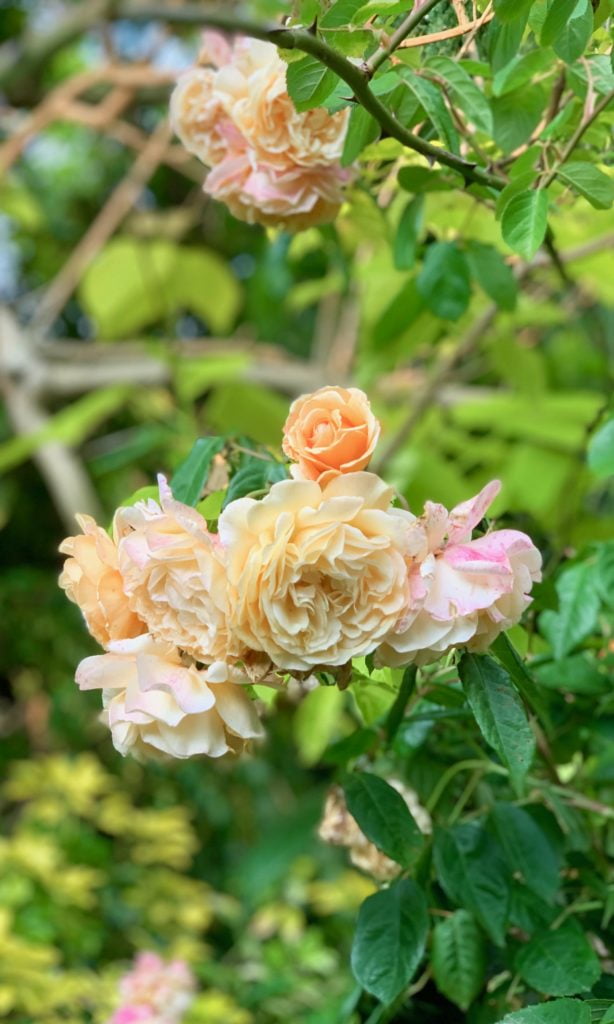
Rosa ‘Buff Beauty’ was introduced by the rose breeder Ann Bentall in 1939.
Lastly, near Clock House is one of two plantings of Rosa ‘Buff Beauty’, a hybrid musk rose of shrub size with fragranced blooms of a wonderful apricot colour … a stunning rose!
I hope this inspires you to visit us soon and to see for yourselves, and to see all the roses I haven’t mentioned!
Graham Best, Head Gardener

